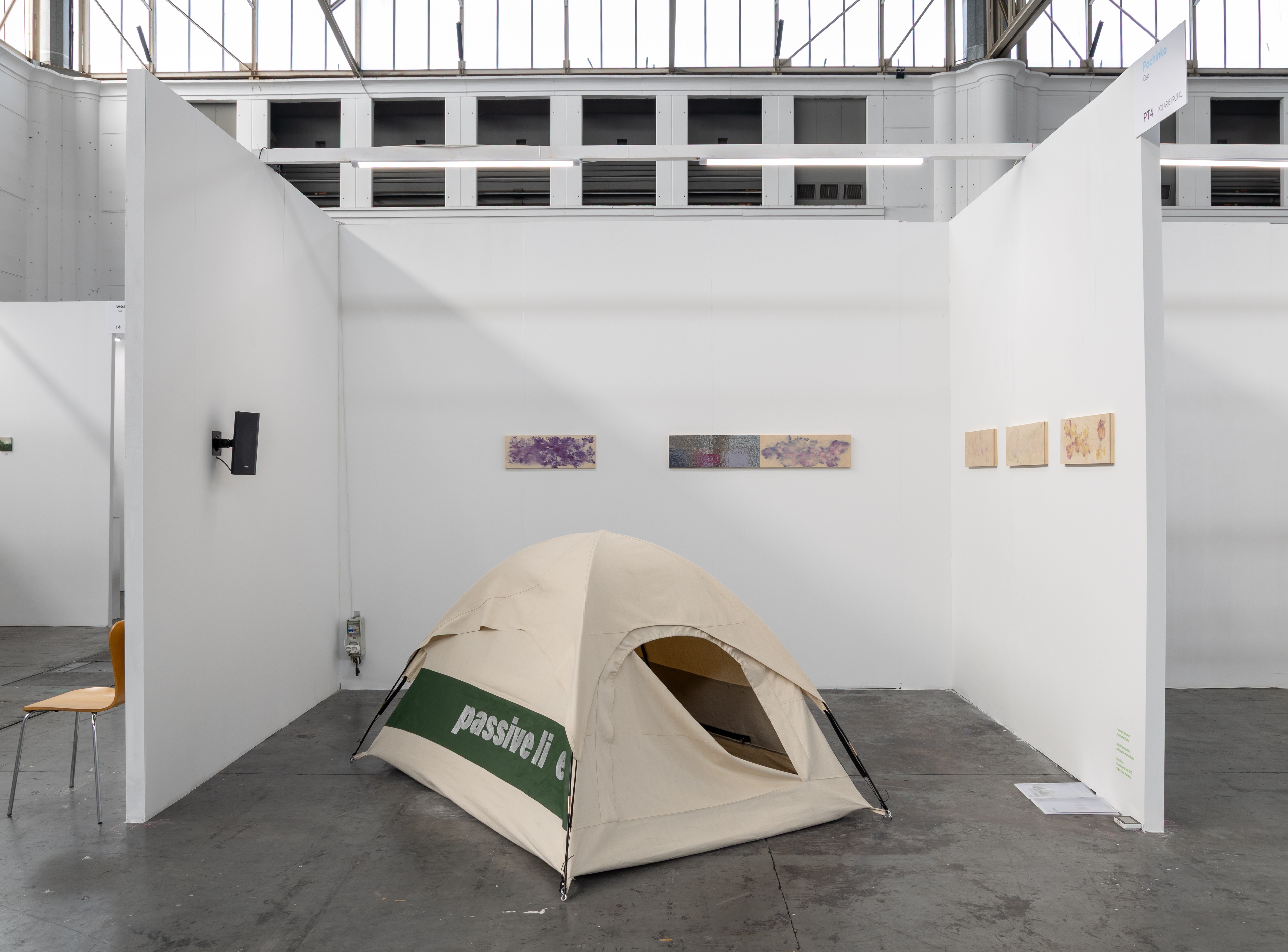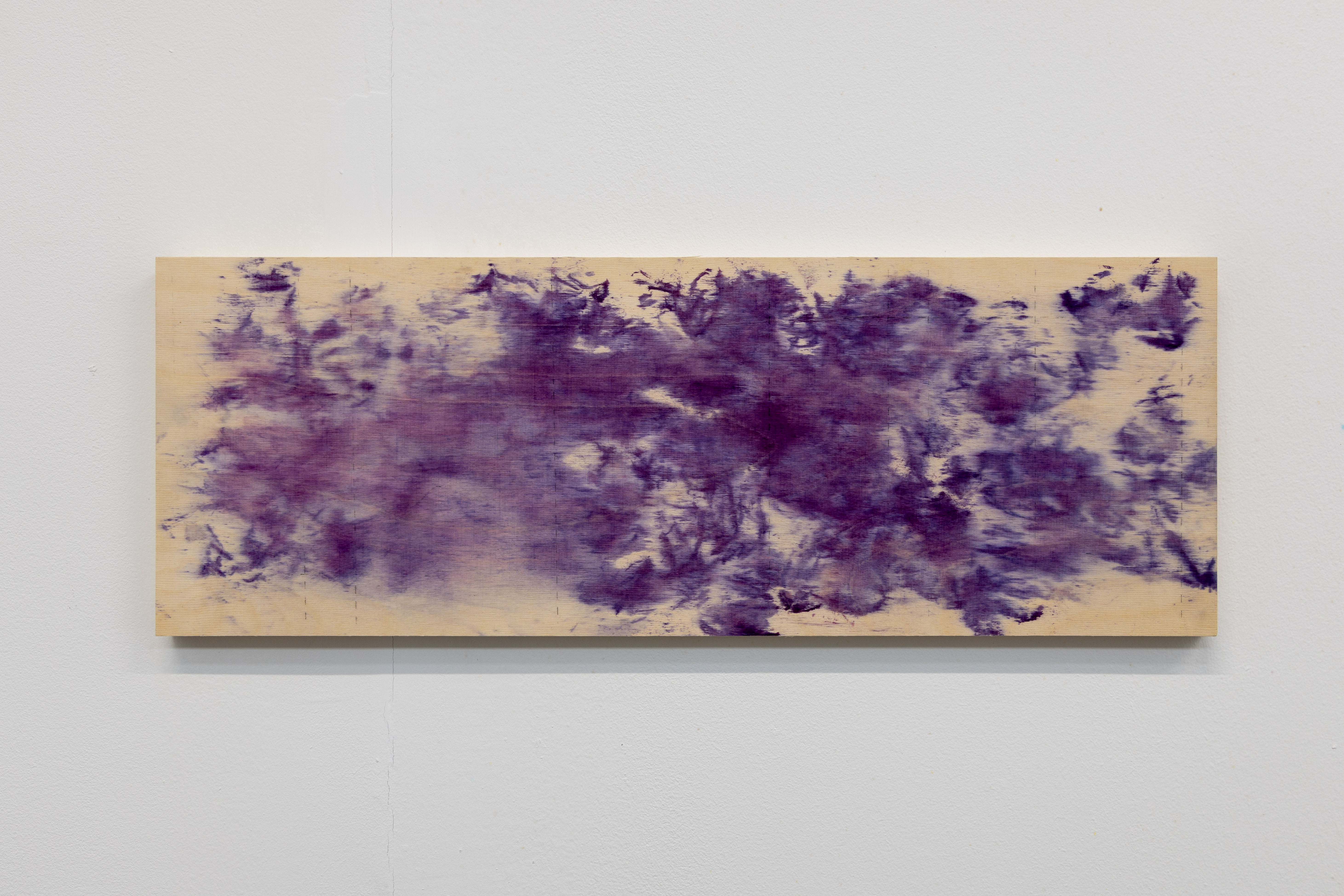For the SWAB Art Fair 2025 in Barcelona with Pachinko, the artist presents a continuation of his Impressionisms series with seven new works made from flower imprints on birch plywood and acetone transfer. The earlier pieces, created with wildflowers collected in Copenhagen’s urban meadows in the summer of 2024, are here followed by a series that uses bouquets purchased from CPH Markets, a wholesale centre for agriculture and floriculture. Each bouquet is documented with its trade name and country of origin, inscribing into the works the otherwise hidden trajectories of cut-flower circulation. Before the imprinting process, the birch plywood is treated with alum, a mordant that prepares the surface to better absorb pigments. Onto these prepared panels, flowers from Ecuador, Kenya, the Netherlands, and Germany are pressed, releasing their colours directly into the wood. The surfaces are further layered with acetone transfers of grid-like structures, evoking the speculative logic of maps, borders, and the territorialisation of land. What remains is not a representation of flowers but the flowers themselves consumed: their pigments absorbed, their forms dissolved, their presence lingering only as stain and absence.
The series also confronts a gap in visibility. In Europe, cut flowers are sold without any obligation to disclose their origin. Unlike food, floriculture is exempt from origin labelling under EU law (Regulation (EU) No 1308/2013). Instead, trade is governed through plant passports for phytosanitary control (Regulation (EU) No 2016/2031), designed to regulate health but not to inform consumer choice. This system renders the origins of cut flowers opaque: when a rose or tulip is purchased, the fact that it has travelled from Kenya, Ecuador, or the Netherlands remains concealed. Within the works, this erasure is inverted—the flowers name themselves through pigment, making the panels into vessels that both carry and are imbued with the landscapes from which they came. The title Impressionism signals not a stylistic reference but the literal act of imprinting, recalling Monet’s poppy fields where painting became a carrier of place and atmosphere. Here, the field is reconfigured: the flowers do not depict but impress themselves, leaving ghostly traces across industrial birch panels. These traces point both to the poetry of vanishing meadows and to the persistence of international trade that continues to displace them.
The works occupy a spectral zone. They echo the ghost of a flower field—half presence, half disappearance—while also laying bare the infrastructures of commerce that shape their circulation. They suggest that the field, whether agricultural, economic, or poetic, is not stable but fugitive, always shifting between memory, material, and trade. Rather than proposing a new kind of flower painting, the series turns painting inside out. It lets the field inscribe itself through pigment and absence, reminding us that even in disappearance, landscapes continue to leave their mark.
R Gr Freedom (Ecuador), 2025
Acetone print and flower impression on birch plywood.
600x210 mm
Rosa Large Diya’s Fire (Kenya), 2025
Acetone print and flower impression on birch plywood.
600x210 mm
Untitled (Water body), 2025
Acetone print and vinyl on birch plywood.
600x210 mm
Acetone print and flower impression on birch plywood.
600x210 mm
Rosa Large Diya’s Fire (Kenya), 2025
Acetone print and flower impression on birch plywood.
600x210 mm
Untitled (Water body), 2025
Acetone print and vinyl on birch plywood.
600x210 mm
Callis Mats Pink (Germany), 2025
Acetone print and flower impression on birch plywood.
600x210 mm
Delph En Atlantis (Netherlands), 2025
Acetone print and flower impression on birch plywood.
600x210 mm
Di St Golem (Ecuador), 2025
Acetone print and flower impression on birch plywood.
600x210 mm
Acetone print and flower impression on birch plywood.
600x210 mm
Delph En Atlantis (Netherlands), 2025
Acetone print and flower impression on birch plywood.
600x210 mm
Di St Golem (Ecuador), 2025
Acetone print and flower impression on birch plywood.
600x210 mm
Di St Farida (Netherlands), 2025
Acetone print and flower impression on birch plywood.
600x210 mm
Acetone print and flower impression on birch plywood.
600x210 mm




